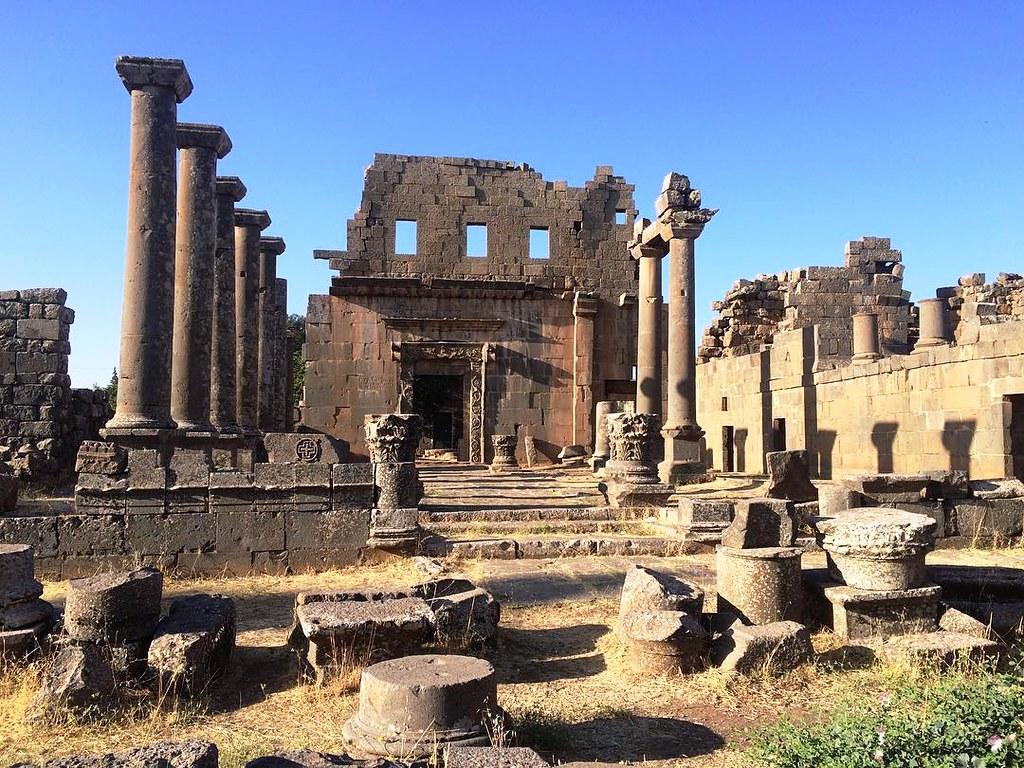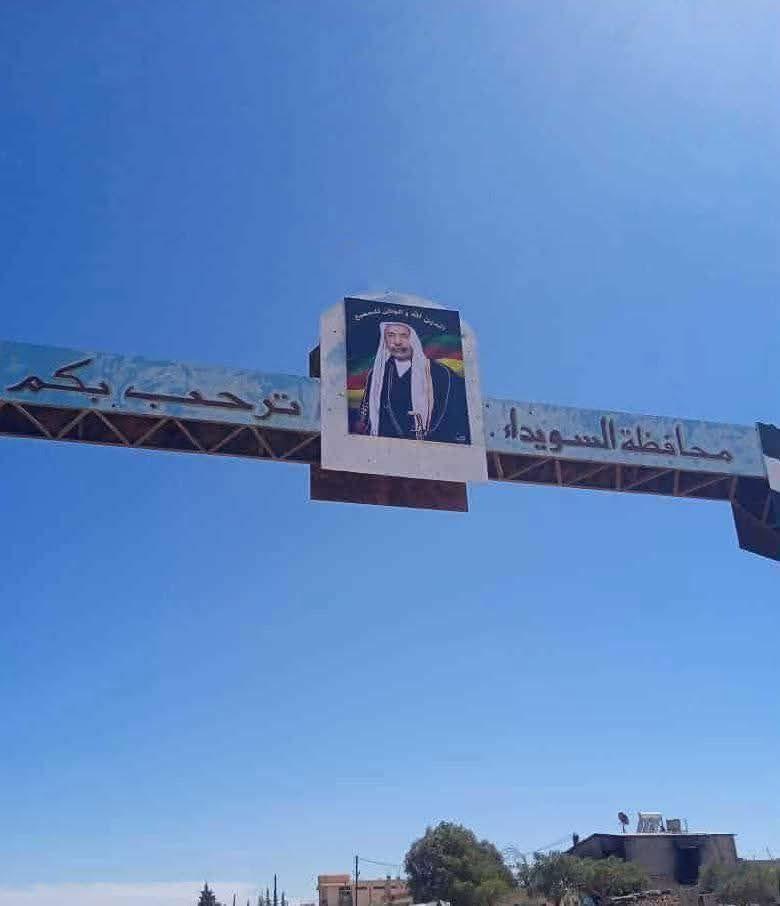تسم تراث جبل السويداء، الذي يُعرف أيضًا باسم جبل العرب، بغنى حضاري وتاريخي عريق يمتد لآلاف السنين. ويظهر هذا التراث في العديد من المعالم الأثرية، والعادات والتقاليد، والفنون الشعبية.
المواقع الأثرية والتاريخية
تزخر محافظة السويداء بالكثير من المواقع الأثرية التي تعود إلى عصور مختلفة، أبرزها العصران اليوناني والروماني.
شهبا: مدينة أثرية تشتهر بحماماتها الرومانية ومسرحها.
قنوات: موقع أثري يضم مسرحًا ومعابد قديمة، منها معبد "آلهة المياه".
صلخد: مدينة تاريخية تضم قلعة صلخد الشهيرة.
ذكير: قرية تُعرف بـ "الخربة" وتحوي آثارًا وأسوارًا قديمة.
المتحف الوطني: يقع في قلب مدينة السويداء، ويحفظ ذاكرة المنطقة من خلال عرضه للقطع الأثرية التي تجسد الحضارات المتعاقبة على جبل العرب.
العادات والتقاليد
تتسم عادات وتقاليد سكان الجبل بكرم الضيافة والتمسك بالأصالة.
الأعراس الشعبية: تعود عادات الأعراس التقليدية في السويداء إلى الواجهة، وتتضمن استعراضات للفنون الشعبية مثل الدبكة والمجوز.
الأكلات الشعبية: يشتهر المطبخ المحلي بأطباق مثل المليحي، التي تعكس كرم أهل المنطقة.
الاحترام: من العادات الشائعة في المنطقة احترام كبار السن وإعطائهم الأولوية في المناسبات الاجتماعية.
الفنون الشعبية والأزياء
الفنون الشعبية والملابس التقليدية جزء أساسي من تراث الجبل.
الزي التقليدي: لا تزال السيدات في السويداء يرتدين الزي التقليدي في المناسبات المختلفة، مثل البدلة العربية، والطربوش، والدامر.
الأغاني الشعبية: هناك العديد من الأغاني التي تُعرف باسم "تراث الجبل" وتُغنى في المناسبات الاجتماعية.
المهرجانات
مهرجان التراث: تُقام في السويداء مهرجانات تراثية سنوية، مثل مهرجان "أكيتو"، الذي يعرض فعاليات فنية وثقافية متنوعة.
المواقع الأثرية والتاريخية
تزخر محافظة السويداء بالكثير من المواقع الأثرية التي تعود إلى عصور مختلفة، أبرزها العصران اليوناني والروماني.
شهبا: مدينة أثرية تشتهر بحماماتها الرومانية ومسرحها.
قنوات: موقع أثري يضم مسرحًا ومعابد قديمة، منها معبد "آلهة المياه".
صلخد: مدينة تاريخية تضم قلعة صلخد الشهيرة.
ذكير: قرية تُعرف بـ "الخربة" وتحوي آثارًا وأسوارًا قديمة.
المتحف الوطني: يقع في قلب مدينة السويداء، ويحفظ ذاكرة المنطقة من خلال عرضه للقطع الأثرية التي تجسد الحضارات المتعاقبة على جبل العرب.
العادات والتقاليد
تتسم عادات وتقاليد سكان الجبل بكرم الضيافة والتمسك بالأصالة.
الأعراس الشعبية: تعود عادات الأعراس التقليدية في السويداء إلى الواجهة، وتتضمن استعراضات للفنون الشعبية مثل الدبكة والمجوز.
الأكلات الشعبية: يشتهر المطبخ المحلي بأطباق مثل المليحي، التي تعكس كرم أهل المنطقة.
الاحترام: من العادات الشائعة في المنطقة احترام كبار السن وإعطائهم الأولوية في المناسبات الاجتماعية.
الفنون الشعبية والأزياء
الفنون الشعبية والملابس التقليدية جزء أساسي من تراث الجبل.
الزي التقليدي: لا تزال السيدات في السويداء يرتدين الزي التقليدي في المناسبات المختلفة، مثل البدلة العربية، والطربوش، والدامر.
الأغاني الشعبية: هناك العديد من الأغاني التي تُعرف باسم "تراث الجبل" وتُغنى في المناسبات الاجتماعية.
المهرجانات
مهرجان التراث: تُقام في السويداء مهرجانات تراثية سنوية، مثل مهرجان "أكيتو"، الذي يعرض فعاليات فنية وثقافية متنوعة.
تسم تراث جبل السويداء، الذي يُعرف أيضًا باسم جبل العرب، بغنى حضاري وتاريخي عريق يمتد لآلاف السنين. ويظهر هذا التراث في العديد من المعالم الأثرية، والعادات والتقاليد، والفنون الشعبية.
المواقع الأثرية والتاريخية
تزخر محافظة السويداء بالكثير من المواقع الأثرية التي تعود إلى عصور مختلفة، أبرزها العصران اليوناني والروماني.
شهبا: مدينة أثرية تشتهر بحماماتها الرومانية ومسرحها.
قنوات: موقع أثري يضم مسرحًا ومعابد قديمة، منها معبد "آلهة المياه".
صلخد: مدينة تاريخية تضم قلعة صلخد الشهيرة.
ذكير: قرية تُعرف بـ "الخربة" وتحوي آثارًا وأسوارًا قديمة.
المتحف الوطني: يقع في قلب مدينة السويداء، ويحفظ ذاكرة المنطقة من خلال عرضه للقطع الأثرية التي تجسد الحضارات المتعاقبة على جبل العرب.
العادات والتقاليد
تتسم عادات وتقاليد سكان الجبل بكرم الضيافة والتمسك بالأصالة.
الأعراس الشعبية: تعود عادات الأعراس التقليدية في السويداء إلى الواجهة، وتتضمن استعراضات للفنون الشعبية مثل الدبكة والمجوز.
الأكلات الشعبية: يشتهر المطبخ المحلي بأطباق مثل المليحي، التي تعكس كرم أهل المنطقة.
الاحترام: من العادات الشائعة في المنطقة احترام كبار السن وإعطائهم الأولوية في المناسبات الاجتماعية.
الفنون الشعبية والأزياء
الفنون الشعبية والملابس التقليدية جزء أساسي من تراث الجبل.
الزي التقليدي: لا تزال السيدات في السويداء يرتدين الزي التقليدي في المناسبات المختلفة، مثل البدلة العربية، والطربوش، والدامر.
الأغاني الشعبية: هناك العديد من الأغاني التي تُعرف باسم "تراث الجبل" وتُغنى في المناسبات الاجتماعية.
المهرجانات
مهرجان التراث: تُقام في السويداء مهرجانات تراثية سنوية، مثل مهرجان "أكيتو"، الذي يعرض فعاليات فنية وثقافية متنوعة.

·2K Views
·0 Reviews



